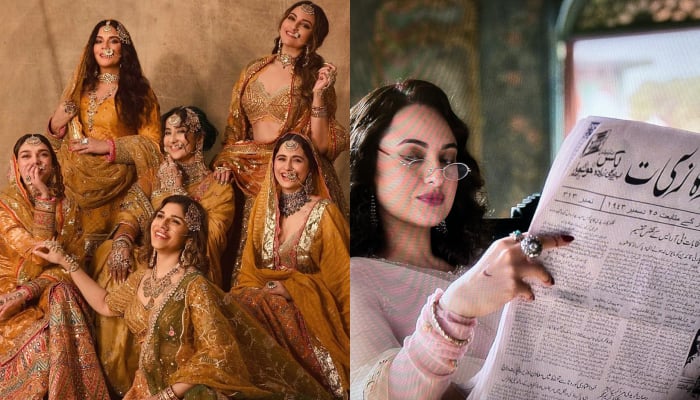In the annals of cinematic history, certain locales possess an undeniable allure, serving as more than mere backdrops but as characters in their own right. Heeramandi, a place of legend and lore in South Asian culture, stands tall among these iconic settings. With its labyrinthine lanes, bustling markets, and vibrant culture, Heeramandi has long captivated audiences, both on the silver screen and in the collective imagination. In this exploration, we delve into the rich tapestry of Heeramandi’s cinematic representation, tracing its evolution from myth to movie magic.
The Mythic Origins:
Heeramandi’s roots lie deep in the cultural heritage of the Indian subcontinent. Historically, it was a district or neighborhood in cities like Lahore and Delhi, known for its courtesans, musicians, and artists. While its actual existence is shrouded in the mists of time, Heeramandi has been immortalized in literature, poetry, and folklore for centuries. Its association with romance, tragedy, and the vibrant life of the demi-monde has made it a potent symbol in South Asian storytelling.
Cinematic Portrayals:
From the early days of Indian cinema to contemporary blockbusters, Heeramandi has been a recurring motif, depicted with varying degrees of authenticity and artistic license. Classic films like “Pakeezah” (1972) and “Umrao Jaan” (1981) brought the opulence and drama of Heeramandi to life, weaving tales of love, loss, and redemption against its evocative backdrop. These movies not only showcased the splendor of Heeramandi but also explored the complex lives of its inhabitants, from courtesans to musicians to patrons.
Modern Interpretations:
In recent years, filmmakers have continued to draw inspiration from Heeramandi, infusing its timeless charm with contemporary sensibilities. Projects like “Tumbbad” (2018) and “Gully Boy” (2019) offer fresh perspectives on this legendary locale, exploring its darker, grittier aspects alongside its enduring allure. These films reimagine Heeramandi as a metaphor for society itself, reflecting themes of class struggle, cultural identity, and the pursuit of dreams in a rapidly changing world.
Beyond Bollywood:
While Bollywood has played a significant role in shaping Heeramandi’s cinematic legacy, its influence extends far beyond the borders of India. Pakistani cinema, for instance, has also explored the mythos of Heeramandi, albeit from a different cultural perspective. Films like “Bol” (2011) and “Zindagi Tamasha” (2020) offer poignant glimpses into the lives of individuals grappling with tradition, modernity, and personal redemption within the framework of Heeramandi’s social milieu.
Challenges and Controversies:
Despite its enduring popularity, Heeramandi is not without its controversies. Critics argue that its portrayal in cinema often romanticizes or sensationalizes the realities of life in such neighborhoods, glossing over issues like exploitation, marginalization, and gender inequality. Others contend that these portrayals are necessary to preserve the mystique and allure of Heeramandi for future generations, ensuring that its rich cultural heritage is not forgotten amidst the march of progress.
Preserving the Legacy:
As Heeramandi continues to evolve in the collective imagination, efforts are underway to preserve its legacy for posterity. Museums, archives, and cultural institutions are working to document the history and heritage of Heeramandi, collecting artifacts, photographs, and oral histories that illuminate its past and present. Additionally, community initiatives aim to celebrate the vibrancy and diversity of Heeramandi’s cultural traditions, ensuring that its stories continue to resonate with audiences around the world.
Conclusion:
Heeramandi remains a beacon of inspiration and intrigue in the world of cinema, its storied past and vibrant present serving as a canvas for storytellers to explore timeless themes of love, longing, and redemption. From its mythic origins to its modern interpretations, Heeramandi continues to captivate audiences with its timeless allure, reminding us of the enduring power of cinematic storytelling to transport us to worlds both real and imagined.




